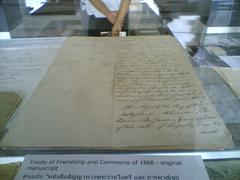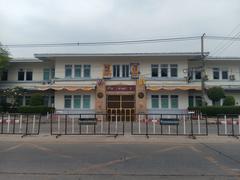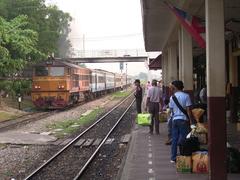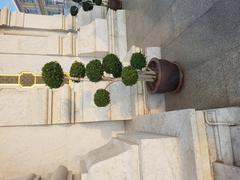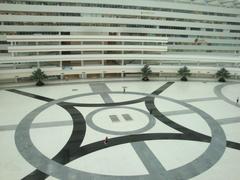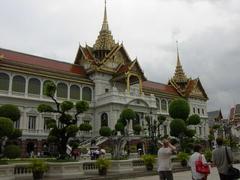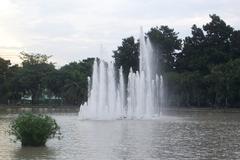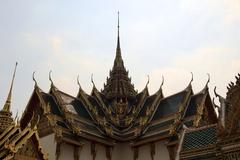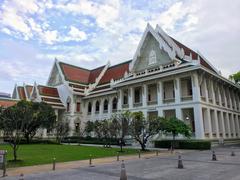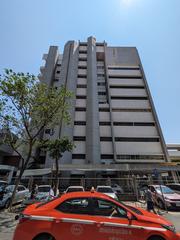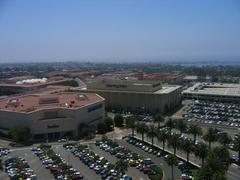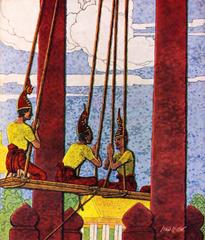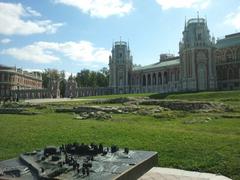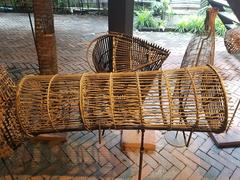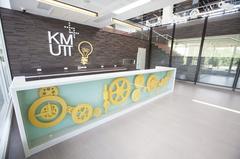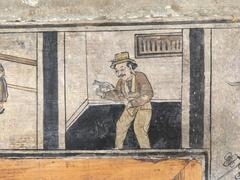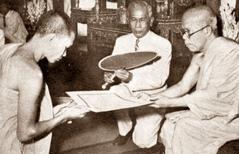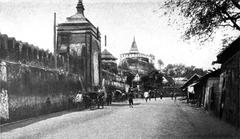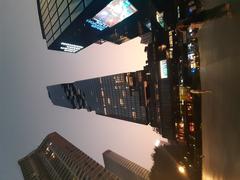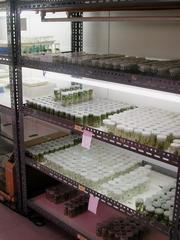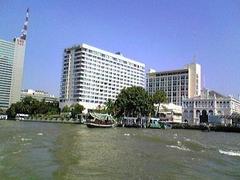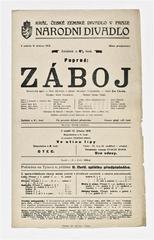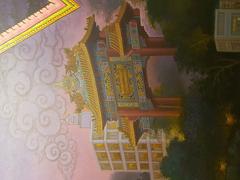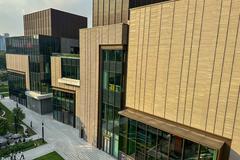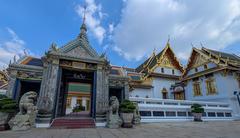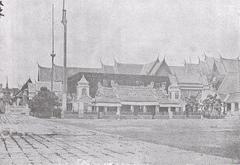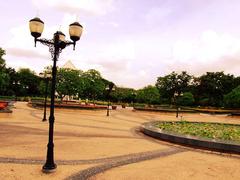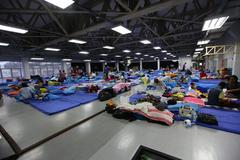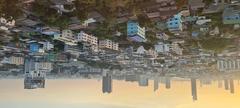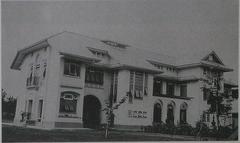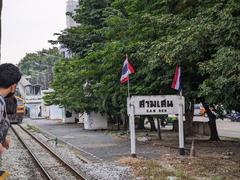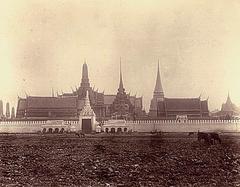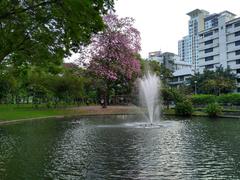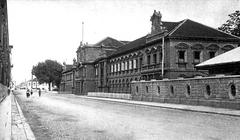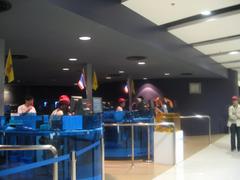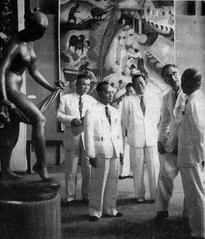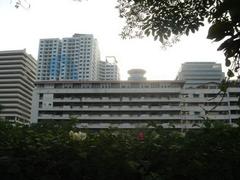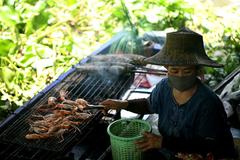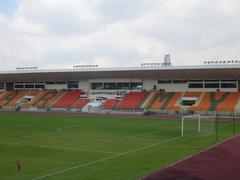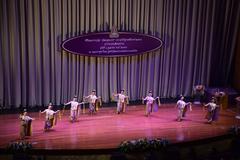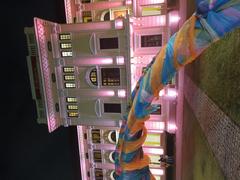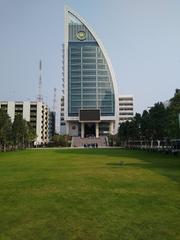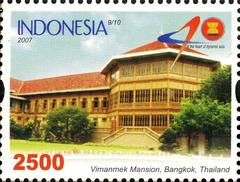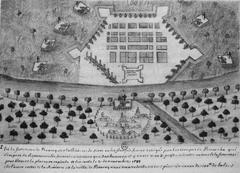Krung Thon Bridge Visiting Hours, Tickets, and Travel Guide in Bangkok
Date: 15/06/2025
Introduction
Krung Thon Bridge, known locally as “Saphan Krung Thon” (สะพานกรุงธน) or “Sang Hi Bridge,” stands as a testament to Bangkok’s mid-20th-century engineering and its ongoing urban development. Spanning the Chao Phraya River, the bridge connects the historic Dusit and Bang Phlat districts, symbolizing the integration of old and new Bangkok. Open 24 hours a day with free public access, Krung Thon Bridge offers not only a vital transportation route but also scenic vistas, cultural significance, and close proximity to some of the city’s most notable attractions.
This detailed guide covers Krung Thon Bridge’s history, architectural highlights, visiting hours, accessibility, nearby attractions, travel tips, and frequently asked questions. Whether you’re a curious traveler, a history enthusiast, or a local looking to rediscover Bangkok, this resource will help you plan an enriching visit.
Historical Background and Naming
Constructed between 1954 and 1958, Krung Thon Bridge was designed to relieve congestion on the Memorial Bridge and facilitate Bangkok’s westward expansion across the Chao Phraya River. The bridge’s name, “Krung Thon,” references Thonburi, Thailand’s former capital from 1767 to 1782, and reflects the enduring link between tradition and progress. Locals often refer to it as “Sang Hi Bridge,” after a nearby road (Wikipedia).
Architectural Features and Engineering
Krung Thon Bridge is a steel truss bridge measuring approximately 648.90 meters in length and 16.60 meters in width, accommodating four lanes of traffic and pedestrian walkways on both sides. Its seven spans rest on sturdy concrete piers, with the main span elevated 7.5 meters above the river to facilitate uninterrupted boat traffic.
The bridge’s light blue paint is both practical and iconic, protecting the steel structure from corrosion while giving it a distinctive appearance against the Bangkok skyline. Its design, featuring through-truss engineering and deep foundations, was advanced for its era and remains a testament to mid-century Thai engineering prowess (Trek Zone).
Visitor Information: Hours, Tickets, and Accessibility
Visiting Hours
- Open 24 hours daily for both vehicles and pedestrians.
- Evening and early morning visits are especially recommended for cooler temperatures and beautiful river views.
Tickets and Entry Fees
- No entry fee or ticket required. Krung Thon Bridge is a public structure and free to access.
Accessibility
- Pedestrian walkways are separated from traffic and suitable for most visitors.
- Wheelchair and stroller access: The bridge features flat, wide walkways, though ramp access may be limited in some areas.
- Cyclists: Bicycles are allowed, but pathways can be narrow during peak times.
Getting to Krung Thon Bridge
- By Taxi or Ride-Hailing: Widely available; input “Krung Thon Bridge” or “Saphan Krung Thon” as your destination.
- By Public Bus: Several city bus routes operate along Ratchawithi Road, servicing the bridge.
- By River Ferry: The nearest Chao Phraya Express Boat piers are Thewet and Phra Pinklao, both a short ride from the bridge (Trek Zone).
- On Foot or Bicycle: Wide pedestrian paths on both sides make the bridge accessible for walkers and cyclists (Wikipedia).
Visiting Experience: What to Expect
Walking and Sightseeing
A stroll across Krung Thon Bridge takes 10–15 minutes at a leisurely pace. The pedestrian walkways provide a safe, separated route with unobstructed river and city views. The structure’s length and height offer unique perspectives of Bangkok’s skyline, passing river boats, and the bustling life below.
Scenic Views and Photography
Photographers are drawn to Krung Thon Bridge for its sweeping panoramas, especially at sunrise and sunset. The bridge’s vantage points capture the Chao Phraya River, the domes of Dusit Palace, and the spires of nearby temples (Trek Zone). Tripods are permitted but should not obstruct pedestrian flow. Drone use requires adherence to local regulations.
Local Life and Activities
Both ends of the bridge are lively, with bustling markets, street food vendors, and local eateries. The bridge is often a focal point during festivals like Loy Krathong and Songkran, when it is adorned with lights and hosts community gatherings (Thailand Travel Diaries).
Nearby Attractions and Suggested Itineraries
Krung Thon Bridge’s central location makes it an ideal starting point for exploring several nearby cultural and historical landmarks:
- Dusit Palace: A 23-minute walk, featuring royal gardens and historic buildings.
- Wat Sam Phraya: A 28-minute walk to a historic royal temple.
- Abhisek Dusit Throne Hall: 24 minutes on foot, now a handicraft museum.
- Dusit Zoo: Approximately 29 minutes away, family-friendly with diverse exhibits.
- Ananta Samakhom Throne Hall: 26 minutes’ walk, showcasing Thai art and architecture.
Sample Half-Day Itinerary:
- Morning walk across Krung Thon Bridge.
- Lunch at a local market.
- Afternoon visit to Dusit Palace and the Ananta Samakhom Throne Hall.
Best Times to Visit
- Early Morning or Late Afternoon: The best times for pleasant temperatures and optimal lighting for photos.
- Festival Periods: Visit during Loy Krathong (November) or Songkran (April) for lively celebrations (Thailand Travel Diaries).
- Weekdays: Less crowded compared to weekends.
Practical Tips for Visitors
- Dress Comfortably: Lightweight, breathable clothing and comfortable shoes are recommended.
- Weather: Carry an umbrella during the rainy season (May–October), and bring water and sun protection during the hot season (March–May).
- Facilities: No restrooms or seating on the bridge; facilities are available at nearby markets and convenience stores.
- Safety: The bridge is well-lit and generally safe, but be mindful of traffic and your belongings, especially during crowded events.
Cultural Importance and Community Role
Krung Thon Bridge is more than a transportation link; it plays a vital role in community life, connecting neighborhoods and serving as a venue for public events, charity runs, and national celebrations. Its utilitarian design and everyday significance have made it a frequent subject in local art, literature, and photography. During festivals and holidays, the bridge is beautifully illuminated and serves as a gathering place for the local community (Asia Highlights).
Maintenance, Preservation, and Modern Relevance
Now over 60 years old, Krung Thon Bridge is regularly maintained to preserve its structural integrity amid Bangkok’s challenging climate. Upgrades have included modern lighting, improved safety barriers, and periodic inspections. The bridge remains a critical artery for vehicles, pedestrians, and cyclists, and is a symbol of Bangkok’s mid-century modernization (Wikipedia).
Frequently Asked Questions (FAQ)
Q: What are the visiting hours of Krung Thon Bridge?
A: The bridge is open 24 hours a day for vehicles, pedestrians, and cyclists.
Q: Is there an entry fee to visit Krung Thon Bridge?
A: No, access is free for all visitors.
Q: Can I cycle or walk across the bridge?
A: Yes, both walking and cycling are permitted. Be mindful of pedestrian and vehicle traffic.
Q: Are there guided tours?
A: While there are no official tours of the bridge, it is often included in local walking, cycling, or river tours of Bangkok’s historical sites.
Q: Is the bridge wheelchair accessible?
A: The bridge has flat, wide walkways, but ramp access may be limited.
Q: What nearby attractions can I visit?
A: Dusit Palace, Wat Sam Phraya, Abhisek Dusit Throne Hall, Dusit Zoo, and Ananta Samakhom Throne Hall are all within walking distance.
Responsible Tourism and Preservation
Visitors are encouraged to respect the bridge’s historic structure, avoid littering, and support local vendors. Participation in educational activities and guided tours can deepen understanding of the bridge’s significance (Thailand Travel Diaries).
Language, Communication, and Connectivity
- Language: Thai is predominant, but English is widely understood in tourist areas.
- Signage: Bilingual signs (Thai and English) aid navigation.
- Connectivity: Bangkok offers excellent mobile coverage; consider a local SIM card for maps and translation apps.
Visuals and Media
- [Include high-quality images of Krung Thon Bridge at sunset and sunrise, and the pedestrian walkway with the river view. Alt tags: “Krung Thon Bridge at sunset over Chao Phraya River,” “Pedestrian walkway on Krung Thon Bridge,” “Chao Phraya River from Krung Thon Bridge.“]
- [Embed an interactive map showing the bridge’s location and surrounding attractions.]
- [Link to virtual tours or videos featuring the bridge and its daily life.]
Internal and External Links
For further reading and planning:
- Bangkok Metropolitan Administration
- Tourism Authority of Thailand
- Expat.com
- Thailand Travel Diaries
- Trek Zone
- Wikipedia
Summary
Krung Thon Bridge is more than a steel crossing—it is a living symbol of Bangkok’s history, community, and resilience. Its accessible walkways, striking river views, and proximity to important landmarks make it a must-visit for anyone exploring Bangkok. Visit during early morning or sunset hours for the best experience, respect local customs, and help preserve this piece of Thai heritage for generations to come.
For the latest travel inspiration, tips, and interactive maps, download the Audiala app and connect with us on social media. Share your Krung Thon Bridge moments with #KrungThonBridgeExplore!
